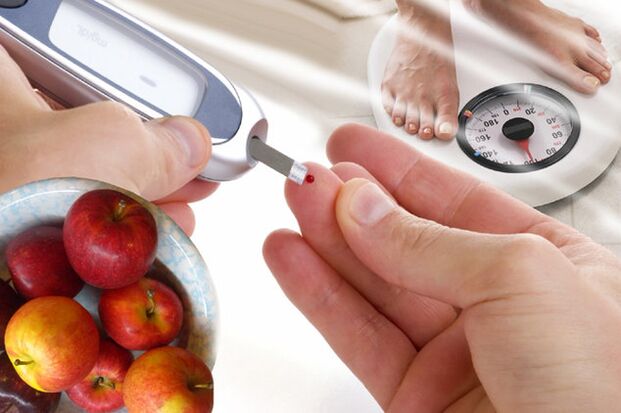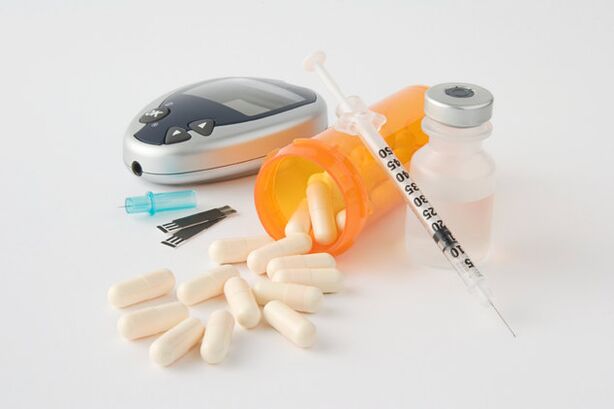Insulin hormone deficiency is a disease known to mankind since antiquity, but despite this and the speed of development of medical technologies, obtaining new knowledge about the disease is extremely difficult to identify it in the early stages. Many patients are not even aware of the presence of diabetes mellitus, attributing the symptoms to hormonal changes in the body and other diseases. Diabetes mellitus negatively affects health and metabolic processes, so it is extremely important to identify it as early as possible and initiate timely treatment.
What is diabetes mellitus?
Diabetes mellitus is a chronic endocrine disease that develops as a result of a lack of insulin. A hormone synthesized by the pancreas is involved in breaking down sugar and transporting glucose through the blood to the tissues of the organs to provide the body with additional energy. In case of lack of insulin, the sugar level increases significantly, which negatively affects the entire body.
Reasons for the development of the disease
The disease most often occurs in the presence of the following causes or prerequisites:
- Hereditary predisposition, in particular, if the father suffers from diabetes, the probability of developing the disease in children is much higher than if the disease is observed in the mother.
- Inadequate nutrition - the abuse of foods high in calories, glucose and carbohydrates.
- The presence of overweight and with the second and subsequent degrees of obesity, the probability of developing diabetes mellitus increases by 80%.
- Lack of physical activity, low human activity.
- Frequent experiences of stressful situations or prolonged depression. Severe shock or nervous breakdown can also cause illness.
- Long-term use of drugs from a certain group, eg hormonal, diuretic or choleretic.
- The presence of a viral infection in the body (varicella, flu, rubella).
disease symptoms
Warning signs that are evidence of the presence of the disease include:
- Constant feeling of thirst, which does not go away even after drinking heavily.
- Frequent urination, especially at night. This causes some discomfort and inconvenience, violates the established way of life.
- The drops of urine remain on the linen, which, when dry, resemble traces of dry starch (white, dense stains).
- The person complains of fatigue and drowsiness.
- Vision is markedly reduced, all objects are blurred.
- Often accompanied by a tingling sensation and numbness, especially in the palms of the hands and soles of the feet.
- Slow and very poor healing of wounds, even the smallest and most insignificant.
- The patient is concerned about the itching, which is especially intense in the groin area.
- Sudden weight loss for no other apparent reason.
- Strong hunger that is difficult to satisfy.
It is important to remember that many of the symptoms already appear when there is a deficiency of insulin in the body and irreversible processes of interruption of the production of the hormone by the pancreas have already started. It is extremely difficult to determine the disease at an early stage, so 80% of patients are not aware of the presence of the disease.
types of diabetes
There are 2 types of diabetes mellitus, which have characteristic differences, despite some similarities.
- Type 1 (insulin-dependent) diabetes is a disease characterized by the death of pancreatic beta cells, whose main function is the production of insulin. As a result of this process, a deficiency of the hormone occurs, which causes diabetes. The causes of the development of the disease include a violation of the immune system, the presence of a viral infection in the human body. As a rule, this type of disease affects children and adolescents. The only treatment option for the condition is regular lifelong insulin injections.
- Type 2 diabetes mellitus is a disease that affects people over thirty years of age and develops as a result of a lack of perception by the body, tissue cells and organs of the insulin produced by the pancreas. Due to the body's inadequate response to the hormone, glucose accumulates in the blood and causes the course of negative processes in the body. In case of premature treatment, the production of insulin is completely stopped, as an increase in the level of glucose in the blood negatively affects the beta cells and contributes to their destruction.
diabetes diagnosis
To diagnose the disease, you must contact the clinic to consult an endocrinologist who specializes in this disease. For the exam, the following procedures and exams are performed:
- Fasting blood test for blood sugar levels. In some cases, when the patient is at risk for the condition, a stress test is performed to determine glucose tolerance.
- Carrying out a urine test for the sugar content and determining its level. A urine test for the presence of acetone may also be performed.
- It is also important to perform an analysis for the installation of glycated hemoglobin, which will help to determine the average blood glucose of the last three months.
- It is important to remember that diabetes is a chronic disease that cannot be cured, so regular maintenance therapy is necessary to maintain a normal condition.

Disease treatment
The main treatment for type 1 (insulin-dependent) diabetes is regular insulin injections. Thanks to modern medical instruments, injections have become much easier; Insulin pumps and pens are used for this. The insulin dosage is set individually for each patient and it is not recommended to change it yourself. The amount of insulin depends on the blood sugar level, the presence of other concomitant diseases (eg obesity), the patient's lifestyle.
In case of incomplete pancreatic insufficiency, the doctor may prescribe drugs that can stimulate the production of the hormone in the human body. To eliminate insulin resistance in the body, other groups of drugs can be used that eliminate insulin resistance and help maintain human health. An important factor is the observance of a special diet, in which foods are selected with a minimum content of sugar, carbohydrates and also stimulating the pancreas.

Disease prevention
To avoid the development of the disease, it is important to follow the endocrinologist's recommendations, which will help maintain health and not fall into the risk group. Preventive methods include:
- Regularly checking blood sugar levels is particularly recommended for those at risk. People over forty should perform this study regularly, at least twice a year.
- Change in eating habits, change to a balanced diet with a predominance of healthy foods – low-glucose fruits, vegetables, fish, lean meats. In addition, it is recommended to follow a diet and distribute the food intake in three equal meals and several snacks.
- Performing simple daily physical exercises, which will help normalize weight and reduce the likelihood of developing diabetes.
- Normalization of weight, which will help reduce the likelihood of developing the disease.

























